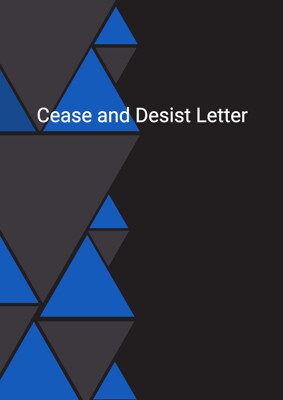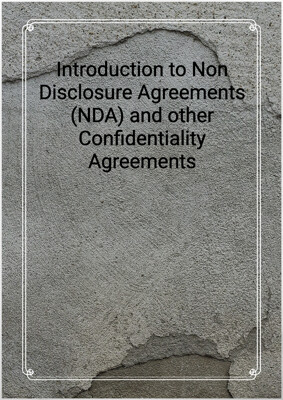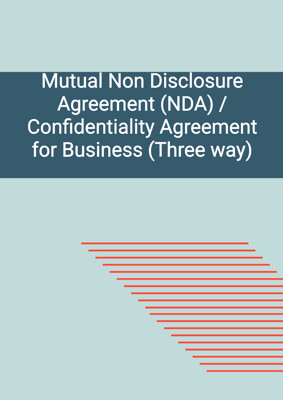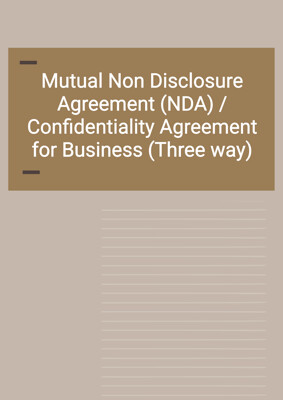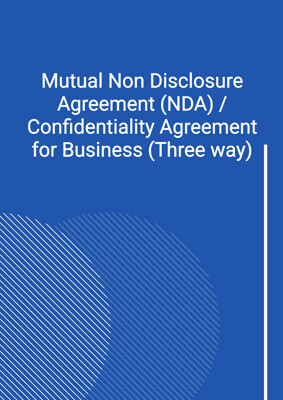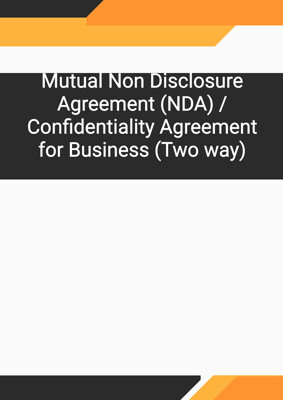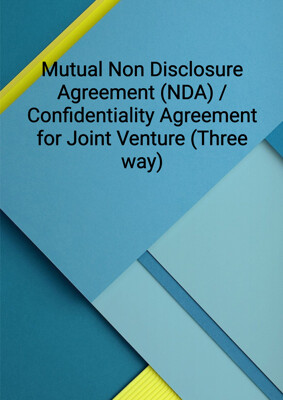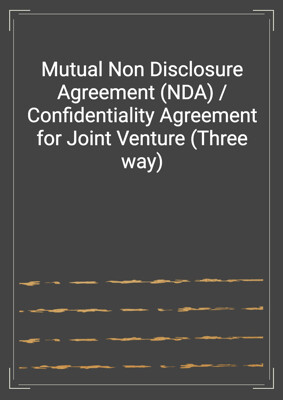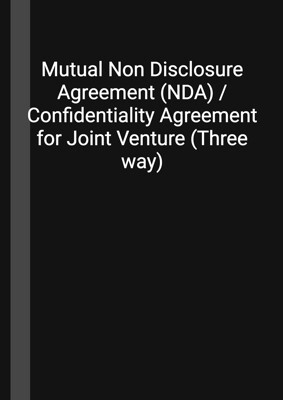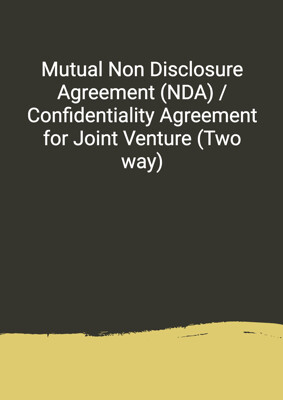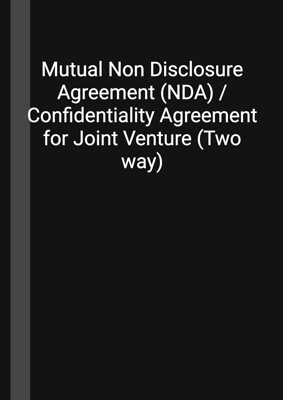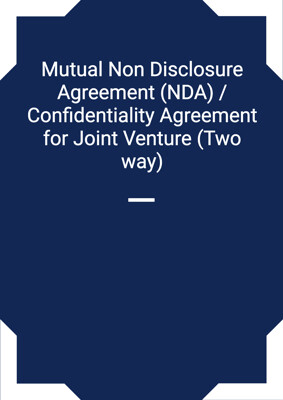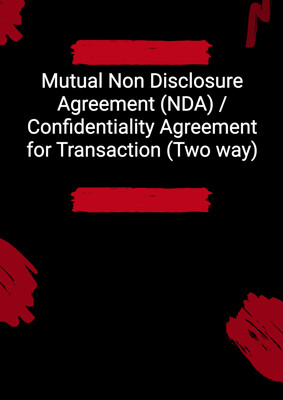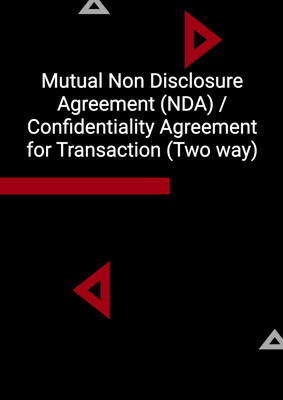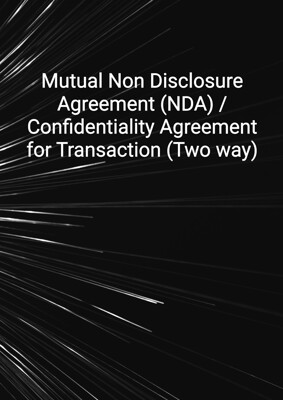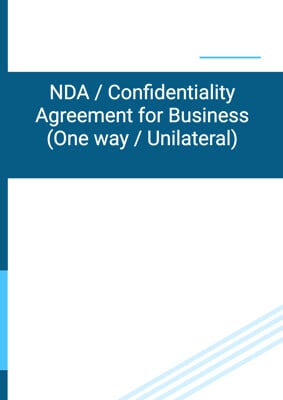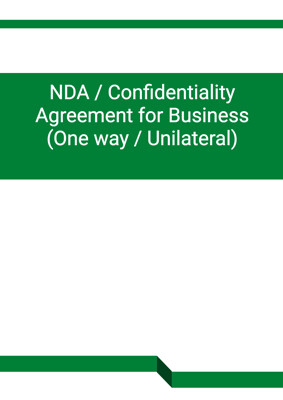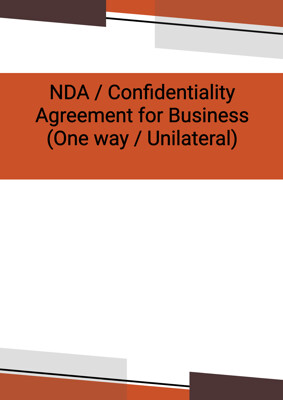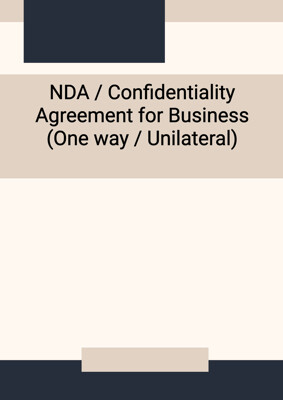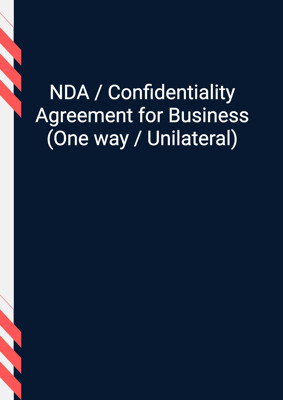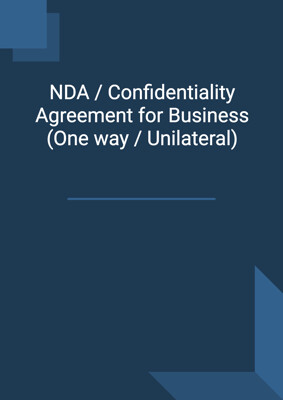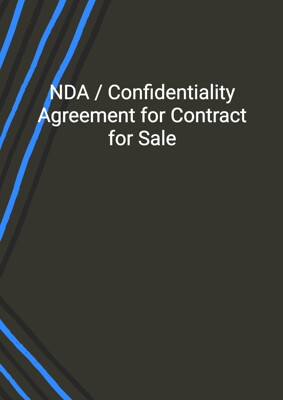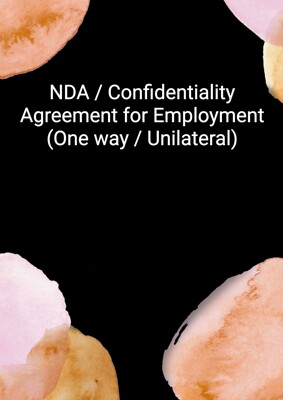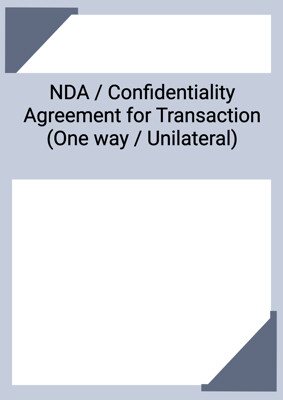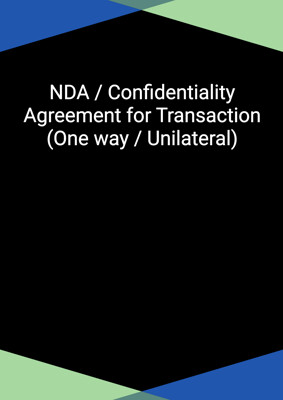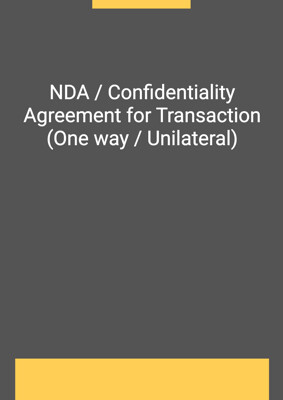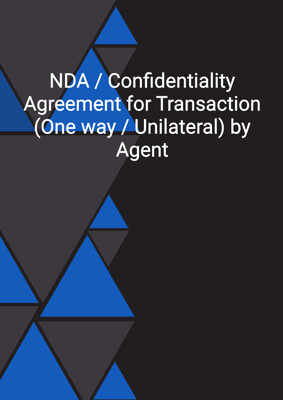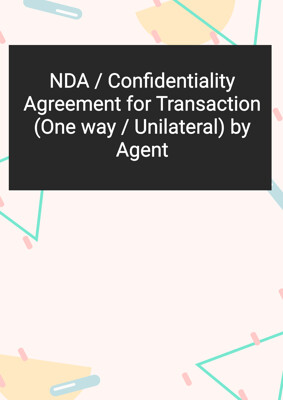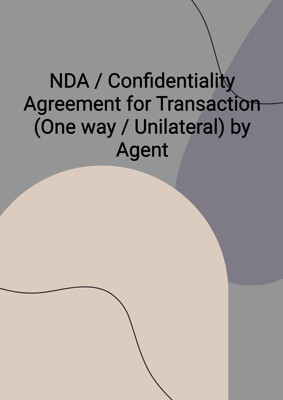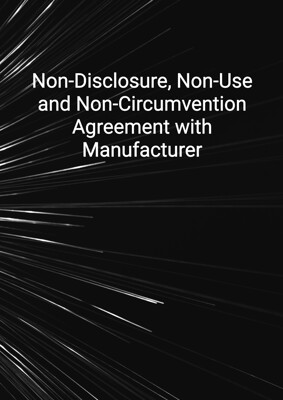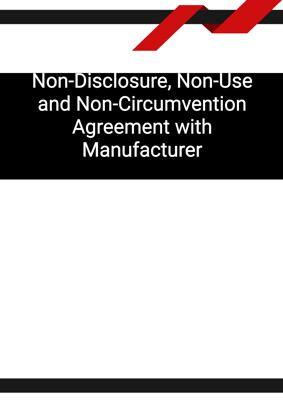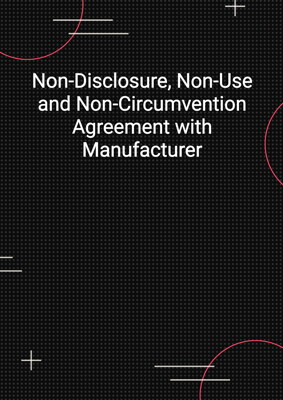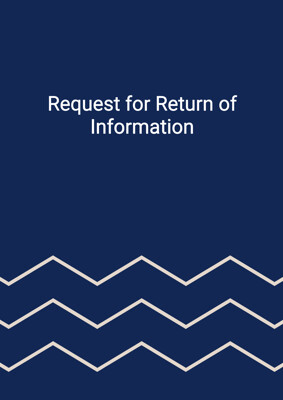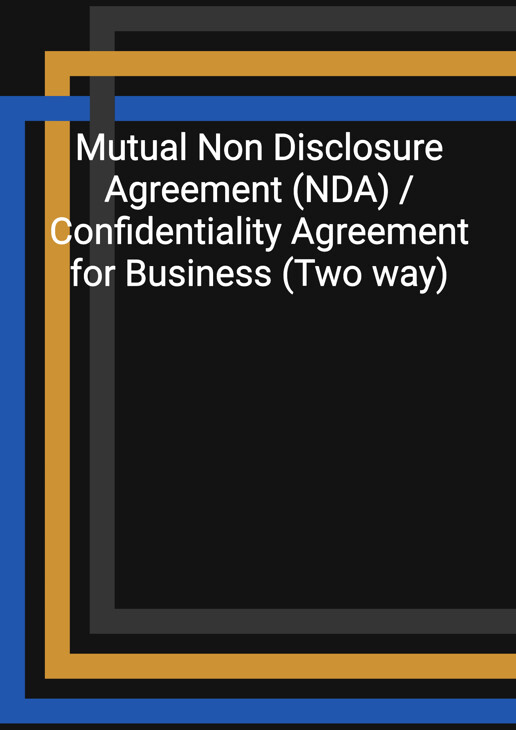
Mutual Non Disclosure Agreement (NDA) / Confidentiality Agreement for Business (Two way)
Strict / Tight
Two way Non Disclosure agreement for discussion of business relationship. It imposes a mutual obligation of confidentiality on the parties who provide and receive information at the same time. This form imposes stricter / tighter obligations on the parties.
How to Tailor the Document for Your Need?
01
Create Document
Fill in the details of the parties. You can click the "Fill with Member’s Information" button to complete it with information saved to your account.
02
Fill Information
Please fill in any additional information by following the step-by-step guide on the left hand side of the preview document and click the "Next" button.
03
Get Document
When you are done, click the "Get Document" button and you can download the document in Word or PDF format.
04
Review Document
Please get all parties to review the document carefully and make any final modifications to ensure that the details are correct before signing the document.
Document Preview
Document Description
The Mutual Non-Disclosure Agreement (NDA) / Confidentiality Agreement for Business (Two-way) is a legal document that establishes a confidential relationship between two parties, Party 1 and Party 2. The agreement is entered into on the current date and is important for protecting the confidential information of both parties.
The entire document consists of 15 clauses that outline the obligations and responsibilities of each party regarding the confidentiality of the information exchanged.
Clause 1 provides the interpretation of the agreement, defining key expressions used throughout the document.
Clause 2 establishes the obligations of confidentiality, stating that each party must maintain the confidentiality of the information and use it exclusively for the purpose defined in the agreement. It also prohibits copying or reproducing any part of the information without prior written approval.
Clause 3 outlines the confidentiality measures that each party must take to protect the disclosed information. This includes restricting access to approved representatives, keeping the information separate from other documents, applying appropriate security measures, and keeping a written record of the information received.
Clause 4 specifies the exceptions to the confidentiality obligations, such as information that is publicly available or previously known to the receiving party. It also allows for disclosure of information if required by law or governmental authority.
Clause 5 addresses the return of information, stating that each party must return or destroy all documents and materials containing the information upon request. Both parties are bound by the confidentiality obligations even after the completion of the purpose or the return/destruction of the information.
Clause 6 includes a disclaimer and warranty, stating that no representation or warranty is made regarding the accuracy, reliability, or completeness of the information. It also clarifies that no intellectual property rights are granted under the agreement.
Clause 7 emphasizes the confidentiality of the agreement itself and requires approval for any announcement or circular related to its existence or subject matter.
Clause 8 addresses the remedies available in case of breach of the agreement, including injunction, specific performance, and indemnification for any loss or harm.
Clause 9 states that no waiver of any provision of the agreement shall operate as a waiver of any other provision.
Clause 10 prohibits the assignment of rights or obligations under the agreement.
Clause 11 confirms that the agreement constitutes the entire agreement between the parties and supersedes any prior representations or warranties.
Clause 12 addresses intellectual property rights and licenses, stating that each party retains its own intellectual property rights and that no rights are granted under the agreement.
Clause 13 specifies the governing law and jurisdiction for any disputes arising from the agreement.
Clause 14 outlines the procedures for giving notices and service of the agreement.
Clause 15 clarifies that the agreement does not confer any rights on third parties.
Each section of the document provides detailed information and instructions for the parties to understand their obligations and responsibilities regarding the confidentiality of the information exchanged.
How to use this document?
To use the Mutual Non-Disclosure Agreement (NDA) / Confidentiality Agreement for Business (Two-way), follow these steps:
1. Review the entire agreement to understand the obligations and responsibilities of both parties regarding the confidentiality of the information.
2. Enter the current date and the names of Party 1 and Party 2, along with their principal places of business.
3. If applicable, include the details of the confidential information in the schedule section.
4. Interpretation: Familiarize yourself with the key expressions used throughout the agreement.
5. Obligations of Confidentiality: Understand that both parties must maintain the confidentiality of the information and use it exclusively for the purpose defined in the agreement. Do not copy or reproduce any part of the information without prior written approval.
6. Confidentiality Measures: Take necessary steps to maintain the confidentiality of the disclosed information, including restricting access to approved representatives, keeping the information separate, applying appropriate security measures, and keeping a written record of the information received.
7. Exceptions to Confidentiality: Be aware of the exceptions to the confidentiality obligations, such as information that is publicly available or previously known to the receiving party. Understand that disclosure may be required by law or governmental authority.
8. Return of Information: Upon request, return or destroy all documents and materials containing the information. Continue to abide by the confidentiality obligations even after the completion of the purpose or the return/destruction of the information.
9. Disclaimer and Warranty: Understand that no representation or warranty is made regarding the accuracy, reliability, or completeness of the information. No intellectual property rights are granted under the agreement.
10. Confidentiality: Keep the existence and nature of the agreement confidential. Obtain approval for any announcement or circular related to the agreement.
11. Remedies: Understand the remedies available in case of breach of the agreement, including injunction, specific performance, and indemnification for any loss or harm.
12. Notices and Service: Follow the specified procedures for giving notices and service of the agreement.
13. No Rights under Contracts for Third Parties: Understand that third parties have no rights under the agreement.
By following these steps, you can effectively use the Mutual Non-Disclosure Agreement (NDA) / Confidentiality Agreement for Business (Two-way) to protect the confidential information exchanged between the parties.
